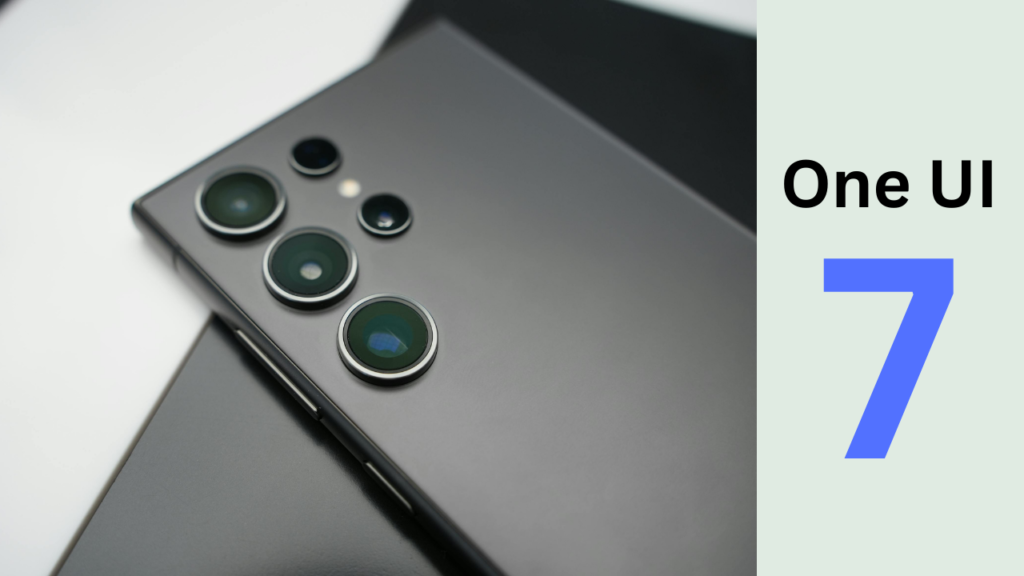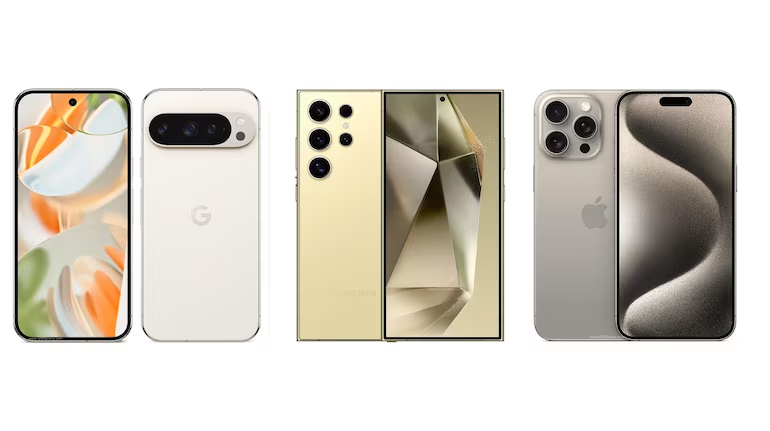iPhone Air review: Not since holding the iPhone X in 2017 have I felt this way about a phone. Eight years later, that same sense of holding the future has returned, this time with the iPhone Air.

The Air replaces Apple’s Pro models as the company’s most premium-feeling device. While the Pros have become more industrial and functional, the Air unapologetically puts form over function. This isn’t to say it doesn’t excel in some areas, its battery life, for one, is truly surprising. Yet in other aspects where I expected more, it fell short. Using the iPhone Air for over two weeks has been an experience of discovery. It feels mature, not like a first-generation product, offering a polished and refined experience from the start.

Feels like jewellery
Like the iPhone X, which broke from the past with its stainless steel frame and full-screen notched display, the iPhone Air feels like a glimpse into Apple’s design future. The X set the aesthetic for the next decade, and the Air feels similarly prophetic.
It is impossibly thin at just 5.6 mm. Holding both the iPhone 17 Pro and the iPhone Air, the Air feels distinctly more premium. It’s not only crafted from titanium (the Pro has reverted to an aluminum back for better thermal management), but it’s also incredibly light. The Air comes in a single 6.5-inch size, and its overall form factor is an experience you simply can’t find elsewhere, save for perhaps the S25 Edge. Aesthetically, this is one of the most beautiful iPhones ever made; it feels like holding a piece of jewellery.

For those concerned about durability, rest assured. The phone has been bend-tested by experts and doesn’t flinch. While a significant drop or immense force will break it like any other phone, its resilience is remarkable, especially its scratch resistance. I haven’t babied this device. Though I used a case outdoors, it was caseless at home, and I’ve yet to see a single scratch. The display, protected by Ceramic Shield 2 glass, has held up surprisingly well. Even after sharing a pocket with other phones, its ceramic shield back remains flawless. This is a durable device that resists everyday wear and tear with ease.
Single camera setup but should you care?
The camera is certainly one of the most controversial aspects of the iPhone Air. In 2025, a single camera on a phone costing ₹1,20,000 seems like an odd choice at first glance. However, this was a strategic trade-off to achieve its super-thin design, as most components are packed into the top half beneath the camera plateau.
For most users, however, this won’t be a weak link. The standard iPhone 17 includes an ultra-wide lens, but the reality is that most people stick to the main camera for their daily photos and portraits. If you’re someone who rarely switches lenses, you will be very happy with the 48-megapixel primary sensor on the iPhone Air. It’s the same sensor as the iPhone 17 and, despite being smaller than the 17 Pro’s, I found it consistently produced images with less noise and more detail than my 16 Pro, thanks to Apple’s software magic.
The major omissions are for the pros: Apple ProRAW and LOG (and the new ProRes RAW) video capture are absent. If you rely on RAW images or Apple’s LOG profile for video, this phone is not for you. As for zoom, Apple claims “four lenses in one.” While a bizarre claim, the 2x digital zoom produces images of near-optical quality, and the portraits I’ve taken are impressively sharp with excellent edge detection. It’s a reliable camera that won’t disappoint for everyday use.
The true highlight, however, is the 18-megapixel front-facing Center Stage camera. Now standard across the iPhone 17 lineup, it makes content creation effortless. You no longer need to rotate your phone for landscape shots; a simple toggle handles it for you. I previously considered the Pixel 9 Pro XL’s selfie camera the best in the business, but the iPhone Air has surpassed it. With autofocus and an automatic wide-angle for group shots, it captures incredibly detailed images and streamlines the user experience.
Image quality from the rear camera is classic iPhone: slightly warm tones, ample detail, and good dynamic range. Apple appears to have tuned its HDR to be more realistic compared to the iPhone 16 series. The new “Bright” photographic style has also become a fast favorite of mine.
So, what’s missing? Cinematic Mode. This is a significant omission for content creators. Its absence, likely due to the single-camera setup, means those who want this feature should look to the standard iPhone 17 or the 17 Pro. Ultimately, your satisfaction with the camera depends on your needs. For everyday snaps, group shots, and personal photos, the iPhone Air is more than adequate.
Here a link to unedited photo samples you can check: iPhone Air photo samples
A stunning display
The display on the iPhone Air is every bit as impressive as its design. It features a 6.5-inch LTPO OLED panel with a fluid 120Hz ProMotion refresh rate, making it a true flagship screen on par with the Pro models.
With support for HDR10, Dolby Vision, and a peak brightness of 3000 nits, the panel is vibrant, and it just look right. That brightness isn’t just a number on a spec sheet. Under the bright Jaipur sun, it’s noticeably brighter than my iPhone 16 Pro. The premium experience is further enhanced by uniformly thin bezels and a new anti-reflective coating, a feature shared with the iPhone 17 Pro. This coating significantly reduces glare, and while it may not be quite as effective as the one on the S25 Ultra, it’s a welcome improvement.

Overall, this is a gorgeous display that you won’t be disappointed with. The inclusion of LTPO technology is also a crucial touch.
Ah yes, battery life
Let’s address the elephant in the room: battery life. In short, the battery is smaller than in other iPhones, but it won’t be a deal-breaker for many potential buyers, provided their lifestyle includes ample charging opportunities. If you have a charger in your car for your commute and a wireless charger on your desk, you’ll be fine. On a light day, you can expect 4-5 hours of screen-on time, and about 4 hours with heavy use.
This is a couple of hours less than the regular iPhone 17 and several hours short of the iPhone 17 Pro models. The longevity isn’t as great, and it charges slower, but if you are buying the iPhone Air, I’m going to assume that you are okay with that. If you dislike plugging in your phone frequently or are often away from a power source, look past the iPhone Air. That said, it still surprised me by lasting longer than I expected.
Performance champ
When it comes to performance, things get interesting. The iPhone Air packs the same A19 Pro chip as the iPhone 17 Pro, albeit with one less GPU core. In daily use, the phone is blazingly fast. Apps open instantly, and the Apple Intelligence experience is identical to other iPhone 17 models. The iOS 26 experience feels much smoother on the Air than on my iPhone 16 Pro, showcasing the power of the new chip.
However, with great power comes the need for thermal management. The top half of the iPhone Air, where the internals are housed, can get noticeably warm. It’s not hot, and it’s not a deal-breaker, but it is worth mentioning.
In an interesting test, I exported a 35-second 4K clip in LumaFusion on both the iPhone Air and an iPhone 16 Pro. Surprisingly, the 16 Pro, with its A18 Pro and an extra GPU core, consistently exported the video faster. The difference is only a few seconds and shouldn’t sway your purchase decision, but it’s a curious outcome of the Air’s hardware configuration.
For benchmark nerds, the phone registered 3242 points in Geekbench 6’s single-core test and 9077 points in the multi-core test. In the GPU benchmark, it scored 38,115 points. In comparison, the iPhone 16 Pro achieved 3486 points in single-core, 8752 points in multi-core, and 32,642 points in the GPU test.
What could be better (or different)?
Even for a device that prioritises form, a few fundamentals feel lacking. My number one gripe has to be the single speaker located at the top of the phone. While fine for most audio, I noticed crackling at high volumes on YouTube and other social media apps. For a device with such a gorgeous screen, the audio experience leaves much to be desired.
Other compromises include:
Being eSIM Only: Apple has removed the physical SIM tray worldwide for the iPhone 17 series. While this saves internal space for a larger battery, it’s a significant inconvenience in markets like India, where physical SIMs are still common (and preferred).
USB 2.0: The Air is still equipped with a USB 2.0 port, unlike the Pro models’ USB 3.0. This means slower data transfer speeds for anyone who moves large files.
Then again, the target audience for the iPhone Air likely isn’t attaching SSDs to shoot high-end video. They’re buying it for how it looks and feels, for something unique and unlike anything else on the market. When viewed through that lens, its minor cons seem to vanish.

The Verdict
For ₹1,19,900, the iPhone Air is unlike any other phone. It’s remarkably thin, has a great camera for most people, and features a gorgeous display at just the right size. It is spectacular to hold, remaining comfortable even for long periods. If you appreciate beautiful technology, the iPhone Air is a no-brainer.
The battery life is decent enough, and the performance is top-notch. If you prioritise form over function and don’t want to spend the extra ₹15,000 for a Pro model, the Air is an excellent choice. It’s not the phone most people should buy, that would be the standard iPhone 17. But for those driven by design and the simple joy of using a well-crafted tool, the iPhone Air is the one to get.
In fact, I would go on to say that it’s a practical phone for many, if content creation isn’t a priority. The more I used it, the more it grew on me. Had it included a telephoto lens, I’d have happily made it my daily driver. That’s how good it is.


